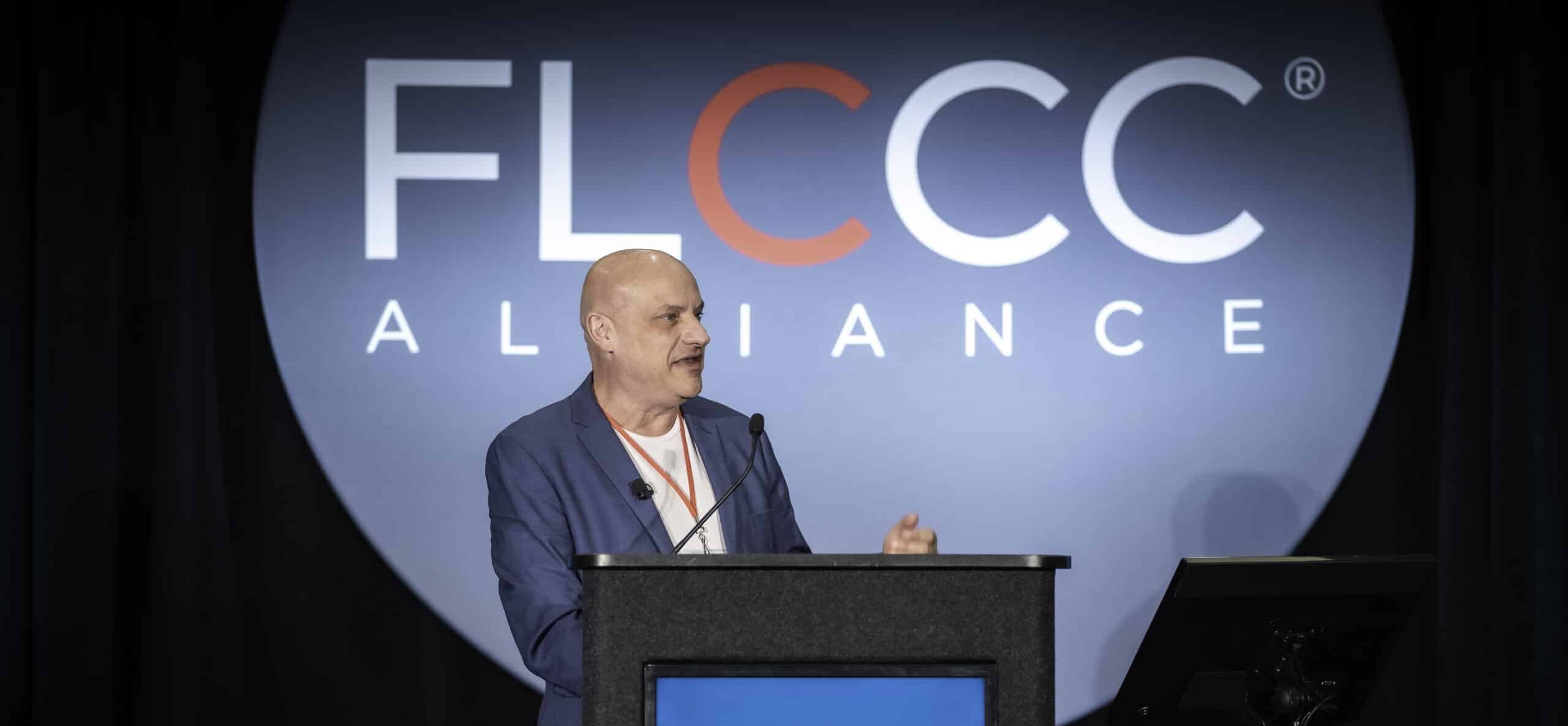On January 6, 2021, Dr. Paul Marik and Dr. Pierre Kory – founding members of the Front Line Covid-19 Critical Care Alliance (FLCCC) – along with Dr. Andrew Hill, researcher and consultant to the World Health Organization (WHO), presented their data on ivermectin before the National Institutes of Health (NIH) Treatment Guidelines Panel.
1 On January 14, 2021, the NIH upgraded their recommendation and now considers ivermectin an option for use in COVID-19 —by no longer recommending “against” the use of ivermectin for the treatment of COVID-19. A similar neutral stance applies to monoclonal antibodies and convalescent plasma, both of which are widely used in COVID-19 treatment in the U.S. However, the FLCCC considers the Panel’s unwillingness to provide more specific guidance in support of the use of ivermectin in COVID-19 to be severely out of alignment with the known clinical, epidemiological, and observational data. Our detailed response to the Panel’s criticism of the existing evidence base is below. NIH Recommendation on the Use of Ivermectin for the treatment of COVID-19
2 “The COVID-19 Treatment Guidelines Panel has determined that currently there are insufficient data to recommend either for or against the use of ivermectin for the treatment of COVID-19. Results from adequately powered, well-designed, and well-conducted clinical trials are needed to provide more specific, evidence-based guidance on the role of ivermectin for the treatment of COVID-19.” FLCCC Response: We are grateful that the Panel has upgraded their recommendation from “against use” to a neutral stance that neither promotes nor discourages use of ivermectin by doctors. A similar neutral stance applies to monoclonal antibodies and convalescent plasma, both of which are widely used in COVID-19 treatment in the U.S. However, these therapies are objectively inferior to ivermectin in three critical ways: 1) Ivermectin is the ONLY one of these 3 therapies that has multiple randomized controlled trials (RCT’s) and a meta-analysis of RCT’s that demonstrate statistically significant: a. Large reductions in mortality rates; b. Shorter durations of hospital stay; c. Profound reductions in the infectivity rate in both pre- and post-exposure prophylaxis studies; d. Faster times to clinical recovery; e. Faster times to viral clearance. 1 See our Press Release from Jan 7, 2021. Ivermectin is the ONLY one of these 3 therapies that is globally available, low cost, given orally, requires no special shipping or handling, and is safe to use in nearly all clinical situations.
3) Ivermectin is the ONLY one of these three therapies that can be widely used in both early outpatient treatment as well as in prevention of transmission. NIH Summary Description of the Evidence Base “Some clinical studies showed no benefits or worsening of disease after ivermectin use, whereas others reported shorter time to resolution of disease manifestations attributed to COVID-19, greater reduction in inflammatory markers, shorter time to viral clearance, or lower mortality rates in patients who received ivermectin than in patients who received comparator drugs or placebo.” FLCCC Response: We strongly object to suggesting that there is a clinical evidence of worsening disease with ivermectin use. The first three open label RCT’s (references 11–13) found no benefit with short duration of treatment (1–2 days) vs. early viral clearance when treatment was extended to five days. Only the observational study by Soto-Becerra et al. (references 14) reported contradictory findings of potential harm. This study consisted of a pharmacy database analysis which attempted to compare patient groups that received either hydroxychloroquine, azithromycin, or ivermectin (dosage and duration not reported) to those that received supportive care only.
In each treatment group, a large number of early deaths occurred while none occurred in the control group, clearly indicating that the sicker and more imminently dying patients received some form of “experimental treatment.” If a study of this quality and design had instead somehow concluded a benefit for ivermectin, as evidence-based scientists and clinicians we would be among the first to rapidly dismiss it as biased or of limited interpretive power. The NIH Treatment Guidelines Panel’s List of “Limitations” of the existing evidence base which prevented them from making a stronger recommendation is as follows:
NIH Limitation #1: “The sample size of most of the trials was small.” FLCCC Response: 1) The trials on Ivermectin were not “small”, which we define as less than 100 patients (a number traditionally quoted as being required to confidently detect a mortality benefit from a treatment). Ten of the 17 RCT’s of ivermectin in COVID-19 (ignoring the prophylaxis trials for a moment) included more than 100 patients in each and five included over 50 patients in each. 2) Meta-analyses of RCT’s provide the most certain estimate of treatment effects, much more so than any single, even large trial can. At the time of our combined presentation to the NIH panel (we presented alongside the WHO expert consultant, Dr. Andrew Hill) they were provided the results of a meta-analysis including 17 RCT’s and over 2,100 patients. 3) 14 of the 17 RCT’s reported statistically significant benefits in a variety of important outcomes. It is true that no single trial contains thousands of patients, yet it is also true that a trial of such a size requires either a major pharmaceutical corporation, the NIH, or a well-resourced academic medical center to fund. None have yet done so.
NIH Limitation #2: “Various doses and schedules of ivermectin were used.” FLCCC Response: We strongly reject this as a “limitation” given the opposite is true; it is a strength. An evidence base consisting of varying treatment regimens allows for the identification of an optimal treatment strategy. Dr. Hill’s data compiled for Unitaid and the W.H.O compares single day vs. multi-day dosing using various dose amounts which allows for a more thorough assessment of both safety and efficacy. Further, these data show a dose-response relationship which, when it exists, as it does with ivermectin, provides another pillar of scientific support for any therapeutic. It is these data which allowed us to develop our multi-day treatment protocol given these regimens showed the largest impacts on viral load, time to viral clearance, and time to clinical recovery or hospital length of stay. When only a single trial of efficacy is relied upon for guidance, as evidenced by the worldwide adoption of a single, low-dose regimen of corticosteroids in the wake of the RECOVERY trial, patient outcomes are almost certain to be suboptimal.
NIH Limitation #3: “Some of the randomized controlled trials were open-label studies in which neither the participants nor the investigators were blinded to the treatment arms.” FLCCC Response: While open-label studies can lead to bias when measuring “subjective” endpoints, most trials used multiple objective endpoints, including viral load, viral clearance, and death. A dozen studies and meta-analyses reported statistically significant benefits across objective endpoints.
NIH Limitation #4: “In addition to ivermectin or the comparator drug, patients also received various concomitant medications (e.g., doxycycline, hydroxychloroquine, azithromycin, zinc, corticosteroids), confounding assessment of the true efficacy or safety of ivermectin.” FLCCC Response: We disagree with the validity of this criticism. By definition, a randomized controlled trial randomizes patients to an arm treated with the investigational drug as compared to a control group/placebo group, with all other factors being equal to negate the influence of confounding variables. It would be unethical if patients in the treatment arm and the control arm received no other therapeutic interventions for a potentially fatal disease. In essence these trials compared the local standard of care (SOC) to the standard of care plus the investigational drug (ivermectin). A number of the RCT’s performed a direct head-to-head evaluation comparing the SOC plus hydroxychloroquine versus SOC versus ivermectin; this trial design allows the efficacy of each compactor drug to be assessed; the validity of such a trial design is widely accepted by the scientific community.
NIH Limitation #5: “The severity of COVID-19 in the study participants was not always well described.” FLCCC Response: We share the NIH’s desire for comprehensive and detailed clinical data. While true that the severity of illness was not well described, there were sufficient trials presented where patient severity was sufficiently defined to form a clinically valid opinion on the effectiveness of ivermectin. Further, the severity concern holds no practical significance among the many trials consistently showing that ivermectin is effective in prophylaxis. At present, the data suggest that ivermectin offers significant benefits at virtually every phase and severity of the disease.
NIH Limitation #6: “The study outcome measures were not always clearly defined.” FLCCC Response: Although this is a true statement, it ignores the many “objective” endpoints that were clearly defined (viral load, time to viral clearance) or required no definition (i.e. death). NIH Limitation #7: “Pharmacokinetic and pharmacodynamic studies suggest that ivermectin doses up to 100-fold higher than those approved for use in humans would be required to achieve the plasma concentrations necessary to duplicate the drug’s antiviral efficacy in vitro.” FLCCC Response: We attempted to explain this erroneous reasoning during our presentation to the NIH COVID-19 Treatment. The original study by Caly et al. was an in vitro study using Vero (monkey kidney) cells, which reported an IC50 of about 2uM. While this study confirmed the anti-viral properties of ivermectin and explored an underlying mechanism (the importin pathway), the IC50 is merely a rough starting point for determining an in vivo dosing regimen. There are many reasons that in vitro IC50 concentrations do not accurately map to real-world dosing. Importantly, a Vero kidney cell model excludes the effect of the human hosts’ immune response. Further, the cells’ short-term exposure to ivermectin does not compare to the extended exposure and repeat dosing as occurs in patients. Moreover, ivermectin accumulates in lung tissue at concentrations from three to ten times that of serum levels. This was shown recently when Caly and Wagstaff repeated the above experiment using alveolar cells, with a IC50 of 0.41 uM (105 ug/g). It should be noted that with a single 200ug/kg dose, lung concentrations approximate 180 ug/g in the fasted state and about 450 ug/g when taken with a meal. These lung tissue levels far exceed the IC50 for alveolar cells. However important to our eventual understandings, these are research details to be sorted out later. For now, many thousands of clinical and epidemiological observations of in vivo utility of ivermectin must come before (way before) any concerns raised by a few limited in vitro studies.
Conclusion
In conclusion, we are disappointed by the Panel’s hesitancy to make a recommendation in support of ivermectin, one of the safest, low-cost, and widely available drugs in the history of medicine. While we are thankful for the commitment made to closely monitor the findings of RCT’s near to completion, we struggle to identify an explanation for this level of cautiousness in the setting of escalating and uncontrolled case counts, hospitalizations, and deaths from COVID-19. This cautious approach may be partly related to the fact that none of the therapeutic agents introduced by FDA emergency use authorization during the pandemic has shown a reliable or meaningful impact on any patient centered outcome. The evidence in favor of Ivermectin is growing rapidly; it now includes approximately 32 controlled trials with 20 of them RCT’s with a large majority showing statistically significant impacts on time to viral clearance. Numerous groups worldwide have performed similar meta-analyses of these trials and concluded that ivermectin is a highly effective therapy for COVID-19 and/or should be widely adopted for use. We need careful, considered judgment of the risks vs. benefits to society of recommending a safe and lowcost medicine like ivermectin in the setting of persistently increasing morbidity and mortality of COVID-19 in the community. Why does the Panel’s opinion diverge from these other expert meta-analyses? Further, why does the Panel’s opinion diverge from the expert peer reviewers (two of whom we were told were FDA employees) that has now accepted our manuscript and its conclusions for publication?
More on: Advocacy | Agency Response | Andrew Hill | Big Pharma | Big Tech Censorship | Censorship of Science | NIH | Press Release





